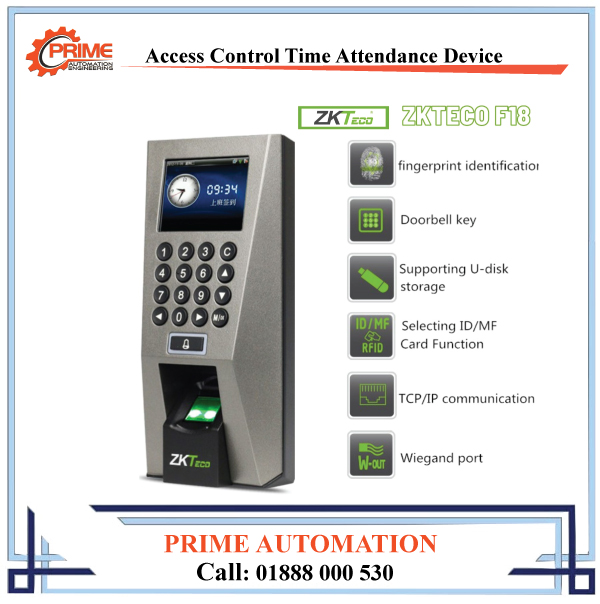Access Control Time Attendance Device


Access control systems using RFID cards and fingerprint recognition are widely used in Bangladesh and around the world to enhance security in various environments, such as offices, residential buildings, and industrial facilities. Implementing such a system involves integrating hardware and software components to control access to specific areas based on the authentication provided by RFID cards and fingerprint scans.
Here are the key components and steps involved in implementing an Access Control RFID Card and Fingerprint system in Bangladesh:
Components:
- RFID Cards:
- RFID (Radio-Frequency Identification) cards are issued to individuals for access.
- Each card is embedded with a unique identifier that is read by RFID card readers.
- Fingerprint Scanner:
- Biometric fingerprint scanners are used for identity verification.
- They capture and store unique features of an individual’s fingerprint.
- Access Control Panel:
- Manages and controls access to specific areas.
- Connects with card readers, fingerprint scanners, and other devices.
- Electric Locks:
- Electric locks are controlled by the access control system to allow or deny entry.
- They can be configured to unlock based on RFID card or fingerprint authentication.
- Software:
- Access control software manages the system.
- It stores user data, controls access rights, and logs events.
- Allows administrators to configure settings and monitor activity.
Implementation Steps:
- Site Assessment:
- Conduct a site assessment to identify access points, security requirements, and potential installation challenges.
- Hardware Installation:
- Install RFID card readers, fingerprint scanners, access control panels, and electric locks at designated entry points.
- User Enrollment:
- Enroll users into the system by assigning RFID cards and capturing fingerprint data.
- Each user is associated with specific access rights.
- Access Control Configuration:
- Set access rules and permissions through the software.
- Define who can access specific areas and during what times.
- Integration:
- Integrate the RFID card readers, fingerprint scanners, and access control panels to communicate seamlessly with the software.
- Testing:
- Conduct thorough testing to ensure that RFID cards and fingerprint recognition work as intended.
- Test different scenarios to verify the reliability of the system.
- Training:
- Train administrators and end-users on how to use the system.
- Provide guidance on proper authentication methods.
- Maintenance and Support:
- Establish a maintenance plan to address issues promptly.
- Provide ongoing support and updates to the system.
- Compliance:
- Ensure that the implementation complies with relevant security and privacy regulations.
Considerations in Bangladesh:
- Local Regulations:
- Ensure compliance with local laws and regulations related to security and data protection.
- Power Supply:
- Consider reliable power sources, especially in areas with frequent power outages.
- Cultural Sensitivity:
- Be mindful of cultural factors when implementing biometric systems.
- Vendor Selection:
- Choose reputable vendors for hardware and software to ensure quality and support.
- User Privacy:
- Implement measures to protect user privacy and secure sensitive biometric data.
- Scalability:
- Design the system to be scalable for future expansion.
Consulting with local experts, considering cultural aspects, and following best practices in security and privacy will contribute to the successful implementation of an Access Control RFID Card and Fingerprint system in Bangladesh








 Automatic Gate
Automatic Gate

































